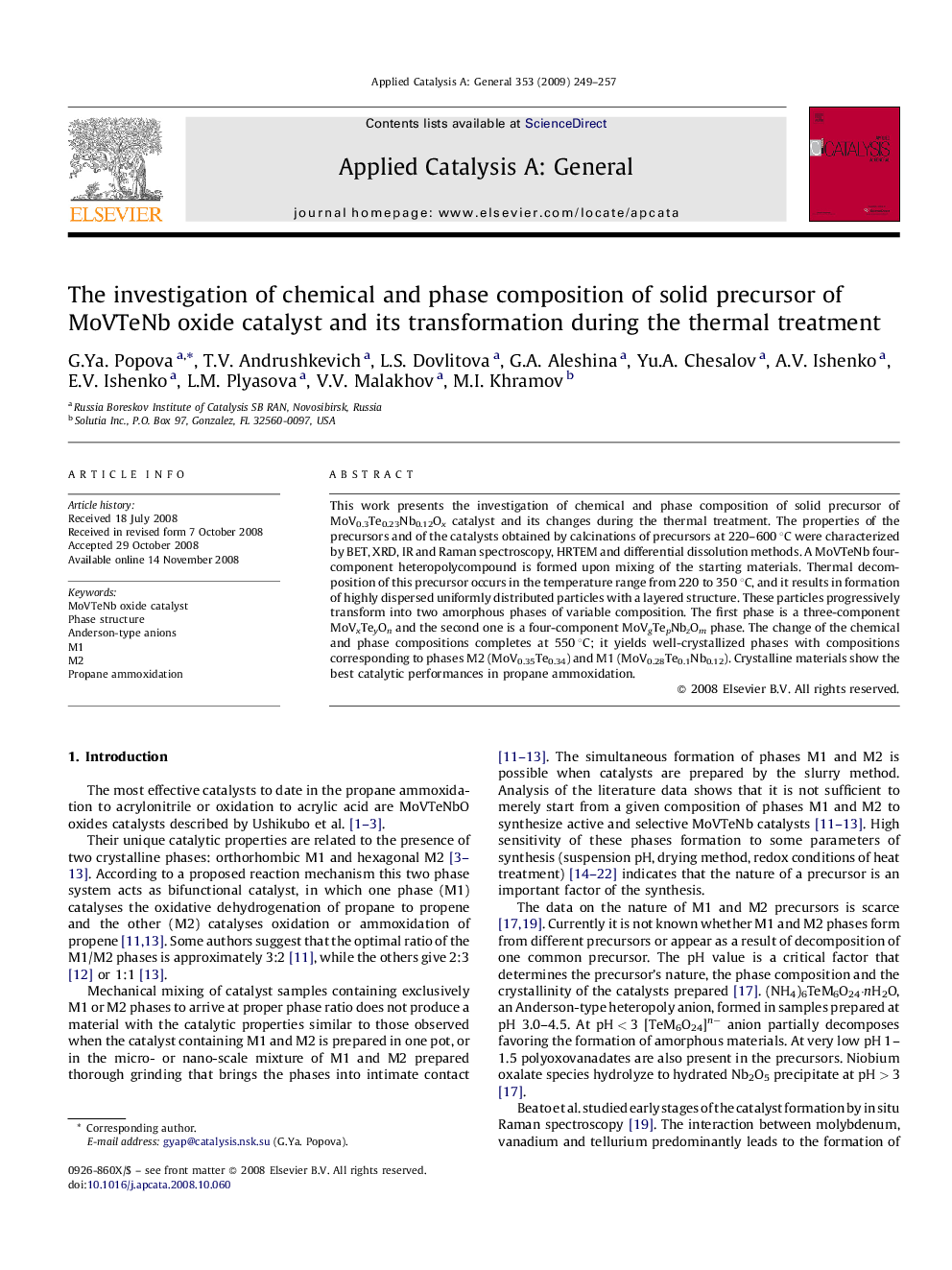| کد مقاله | کد نشریه | سال انتشار | مقاله انگلیسی | نسخه تمام متن |
|---|---|---|---|---|
| 42948 | 45948 | 2009 | 9 صفحه PDF | دانلود رایگان |

This work presents the investigation of chemical and phase composition of solid precursor of MoV0.3Te0.23Nb0.12Ox catalyst and its changes during the thermal treatment. The properties of the precursors and of the catalysts obtained by calcinations of precursors at 220–600 °C were characterized by BET, XRD, IR and Raman spectroscopy, HRTEM and differential dissolution methods. A MoVTeNb four-component heteropolycompound is formed upon mixing of the starting materials. Thermal decomposition of this precursor occurs in the temperature range from 220 to 350 °C, and it results in formation of highly dispersed uniformly distributed particles with a layered structure. These particles progressively transform into two amorphous phases of variable composition. The first phase is a three-component MoVxTeyOn and the second one is a four-component MoVgTepNbzOm phase. The change of the chemical and phase compositions completes at 550 °C; it yields well-crystallized phases with compositions corresponding to phases M2 (MoV0.35Te0.34) and M1 (MoV0.28Te0.1Nb0.12). Crystalline materials show the best catalytic performances in propane ammoxidation.
The chemical and phase composition of solid precursor of MoV0.3Te0.23Nb0.12Ox catalyst and its changes during the thermal treatment at 220–600 °C were investigated by BET, XRD, IR spectroscopy, HREM and differential dissolution methods.A MoVTeNb four-component (C1) Anderson-type heteropolycompound is formed upon mixing of the starting materials. Thermal decomposition of this precursor occurs in the temperature range from 220 to 350 °C, and it results in formation of highly dispersed uniformly distributed particles with a layered structure. These particles transforms into two amorphous phases of variable composition. The first phase is a three-component MoVxTeyOm (C2) and the second one is a four-component MoVgTepNbzOm (C3).As the treatment temperature increases, the chemical composition and content of the phases change.Figure optionsDownload as PowerPoint slide
Journal: Applied Catalysis A: General - Volume 353, Issue 2, 1 February 2009, Pages 249–257